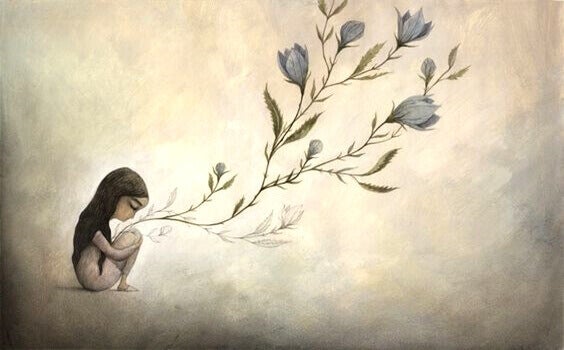Sometimes we see how developmental psychology focuses on studying its very specific aspects, such as the emergence of symbolic skills or creative styles, however, studying a vision of development from a global perspective gives us very useful information. The individual’s life, from birth to death, helps us understand people’s lives. This is where Erikson’s theory of life is involved.
Erikson, through his theory, has become one of the forerunners of life cycle study, and although his work is extensive, his theory of the stages of life is one of his most recognized models, in this theory he establishes 8 steps that represent a change or evolution of personal identity throughout the life cycle. Then, throughout this article, we will briefly explain each of the different stages of this theory.
- Erikson’s theory of the stages of life establishes 8 steps that represent a change in personal identity throughout the life cycle.
The main feature of the different stages exposed by this author is bipolarity, each floor would consist of two poles: one positive and one negative, the individual must face these poles created socially to adapt to the context and develop his identity in the expected way. Each step will be a crisis that the individual will try to overcome to progress throughout their life cycle.
This would be the first stage of the life cycle, from 0 to 1 year, at this stage the baby must develop a confident attitude towards his parents, therefore, if there is stability in the care he receives, the child will generate hope. that, even if things go wrong for some time, will soon get better. Overcoming this step means being able to trust others in the face of the “uncertainty” that the unknown can inspire.
This is the second stage of the life cycle and appears around 2 or 3 years, at this age the child is forced to take steps towards autonomy, has to eat alone, dress alone, oppose his parents, etc. reconcile their desire for autonomy with the social norms that their parents represent or impose.
Starting self-sustaining activities can raise doubts about whether or not you have the ability to perform tasks in this way, but adaptive success is turning this uncertainty into a challenge that fuels a child’s motivation to grow, within the limits imposed by society.
It is the third stage of Erikson’s life and takes place between the age of 3 and 6, at which point the child takes the initiative to try to achieve his personal goals, but he will not always be able to convince them, because in many times he will meet the wishes of others. Therefore, the child must learn to seek achievable goals and thus achieve a goal that allows him or her to pursue meaningful goals.
This is the fourth stage of the life cycle, this crisis appears around 7 to 12 years, the child must learn to manage cultural tools, comparing himself with his peers, it is essential to start working or playing with peers.
Society offers us methods and a culture of cooperation that the individual must understand to acquire competence and performance, but otherwise it will lead to a sense of inferiority to others.
This stage is the fifth stage of the life cycle and appears in adolescence, the teenager undergoes a series of physical changes accompanied by the emergence of new social demands, which will give him a sense of confusion about his roles and his own conception.
Therefore, the individual must strive in the ideological, professional and personal sphere to achieve the development of his identity.
The sixth stage of Erikson’s life stages appears throughout adulthood or youth, the person must be rooted in his identity to establish a connection with others, do he have to find a link, with other individuals?, then, to obtain a fusion of identities, but retaining his personal identity. Overcoming this step means having acquired the ability to have affective relationships of various kinds, in the face of social isolation.
The seventh and penultimate stage of the life cycle encompasses much of adult life, beyond identity and intimacy, the person must be committed to others, to his work, to his children, thus achieving a productive life. protects them from stagnation and helps them move forward with their goals and goals.
The last phase of global human development occurs at the end of adulthood or old age, to be satisfied with one’s life, the individual must look back and agree with the life decisions he has made, therefore a positive assessment of the goals and decisions made. constitutes personal integrity, which shapes a complete and meaningful self-image. On the other hand, a negative view of life itself can involve feelings of hopelessness and helplessness.

